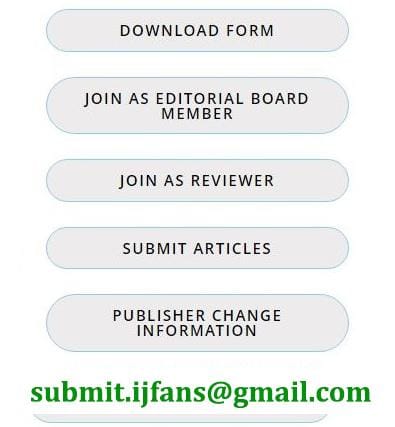
-
BHUTAGNI IN AYURVEDIC PHYSIOLOGY: A CONCEPTUAL EXPLORATION
Volume 14 | Issue 5
-
Investigation of Different Tea spent Waste Variants (Green Tea, Tea Dust, and Tea Granules) on the Growth and Biomass Production of Fenugreek (Trigonella foenum-graecum) for Sustainable Agriculture
Volume 14 | Issue 5
-
FORMULATION AND EVALUATION OF AN ALOE-BASED HERBAL HAIR SERUM FOR SCALP NOURISHMENT
Volume 14 | Issue 5
-
CONSUMPTION PATTERN OF ORGANIC FOOD AMONG WOMEN CONSUMERS OF PATNA SADAR
Volume 14 | Issue 5
-
Artificial intelligence in gynecologic and obstetric emergencies
Volume 14 | Issue 5
STABILITY STUDY AND FORTIFICATION SAMBAR POWDER WITH FERROUS BIS GLYCINATE
Main Article Content
Abstract
Iron deficiency anemia (IDA) is major health concern in India. Strategies to target Iron deficiency anemia, including food fortification and supplementation, have been used with limited impact in low income, rural populations. Food insecurity, reduced dietary diversity, diets rich in Fe absorption inhibitors and low consumption of animal products and fortified foods contribute to the underlying causes of IDA. Fortification with iron is technically more difficult than fortification with other nutrients because iron is a prooxidant and therefore promotes lipid oxidation (El-Kholy and others 2011). Therefore, the ideal iron compound for food fortification should be one that supplies high bioavailability of iron and does not affect the nutritional value or sensory properties of the food, should be stable during food processing and of low cost (El-Kholy and others 2011). It is therefore proposed that iron salts should be microencapsulated to reduce or prevent these negative effects. Microencapsulation is the technology of packaging solid, liquid and gaseous materials in small capsules that release their contents at controlled rates over prolonged period of time (Abbasi and Azari, 2011). The choice of iron compounds also depends on its solubility in gastric juice and on the presence of activators or inhibitors in the fortification food ( Boccio and others 1997). Iron amino acid chelate is being increasingly considered in programs for iron fortification of foods.

